
Elements and Principles of Interior Design
Interior design elements form the basis of interior design principles. The application of both together makes the aesthetics in any home, retail or commercial space pleasing and perfect. When applied in interior design, they help to create cohesive spaces.
The best interior designers consider design elements and principles to evaluate their designs and create beautiful interiors. So, let’s understand the seven elements of interior design and the seven principles unique to interior design.
The 7 Interior Design Elements
There are seven elements of design that are considered a standard and essential part of interior design. They are:
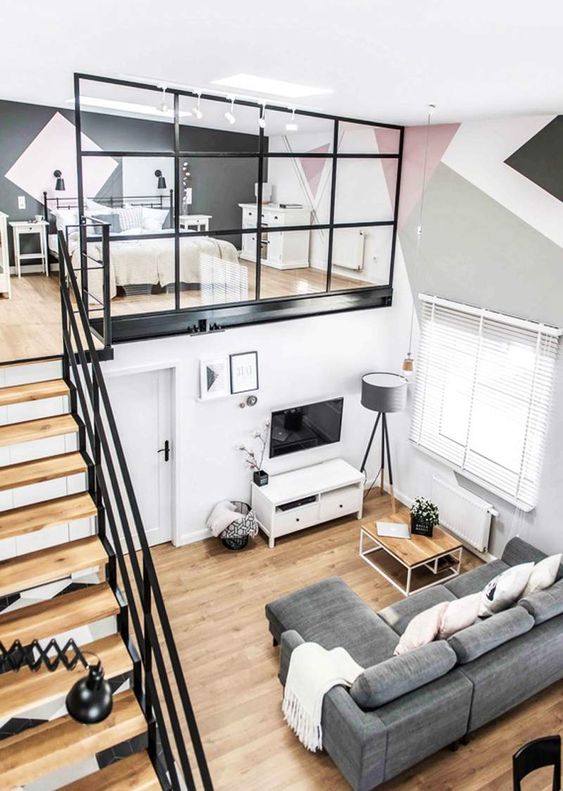
1. Space
Functional space includes understanding the area and its usable space. Interior designers consider positive spaces (area filled with furniture), negative spaces (open space around furniture), and even placement of doors and windows before starting to design. It is the right balance between positive spaces and negative spaces that create a functional and seamless design.
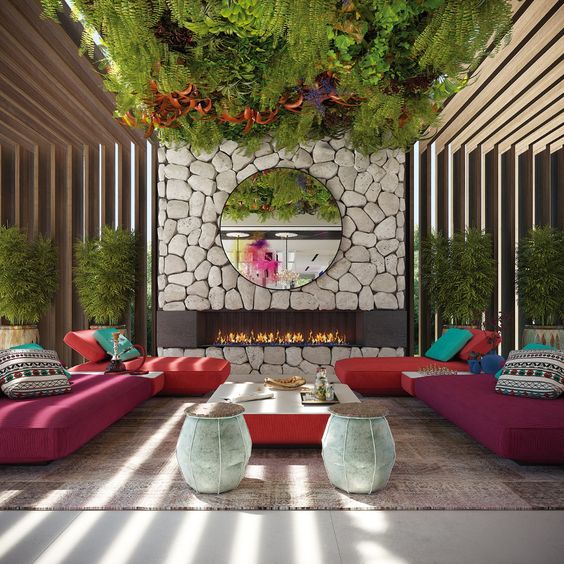
2. Colour
Colours create an illusion of space and set a mood. Interior designers utilize complementary or contrasting colours depending on the room, its purpose, and the psychological effect a colour may have on the person living or working there. As colours appear different in natural light and artificial light, it is also essential to consider this aspect before choosing a colour theme.
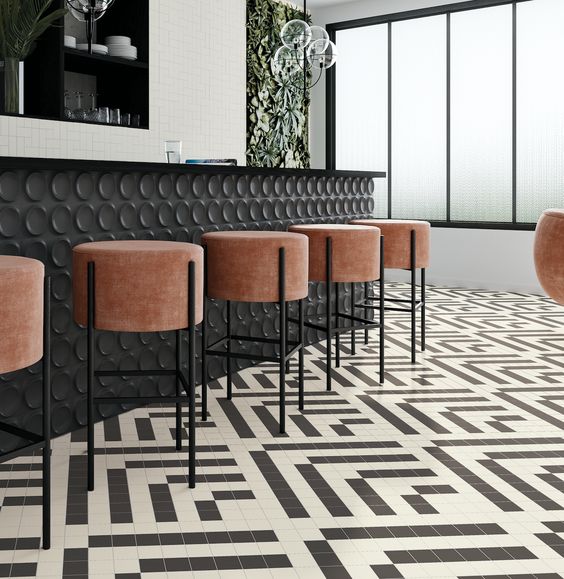
3. Lines
Line creates movement and a smooth flow. Lines define the shape and volume of space. They help to lengthen or shorten a space, create height, and visually impact the design. The best is to use a mixture of horizontal, vertical, and dynamic lines, with one type taking the lead. Interior designers use linear elements in design to draw the eye.
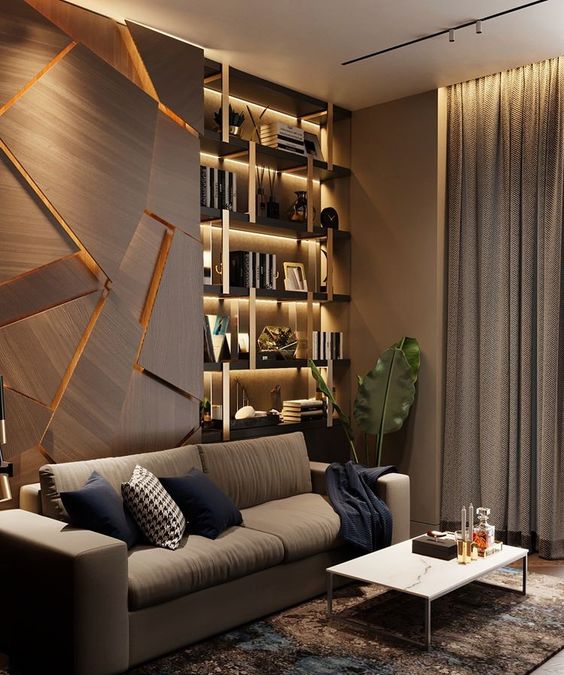
4. Light
Lighting is another critical aspect of interior design. It is necessary to consider artificial lighting and natural light while designing any residential, retail, restaurant, or workspace. Good lighting sets a mood, plays with perceptions, creates depth and height, and draws attention to the most impressive areas. Every interior designer uses ambient lighting, accent lighting, and task lighting to brighten a room.
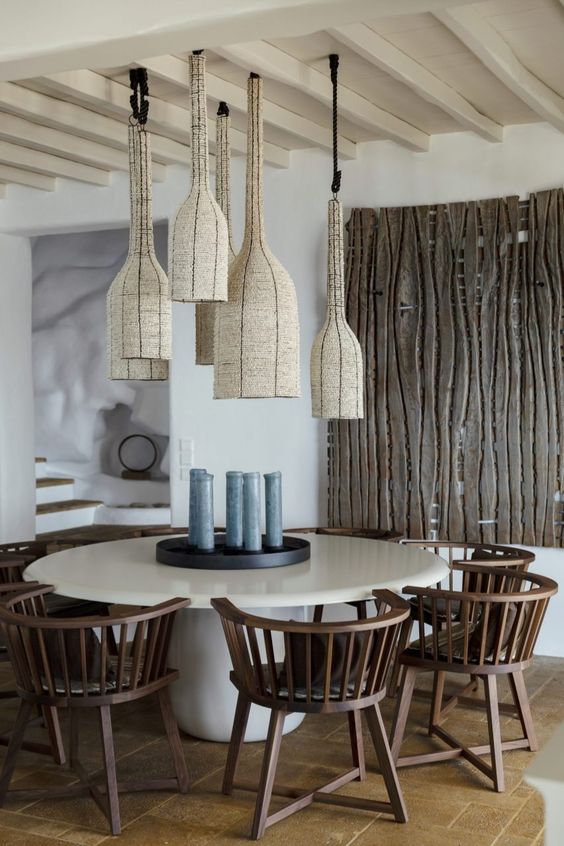
5. Texture
Texture in interior design refers to the physical surface quality of a material. This element helps to influence the tone and weight of a room, dictating how a room feels at first glance. Interior designers incorporate two types of touchable textures – visual textures (that appeal on first glance) and tactile textures (that ignite a sense of touch). They use floorings, wall finishes, furniture, cushions, and bedding material to incorporate textures.
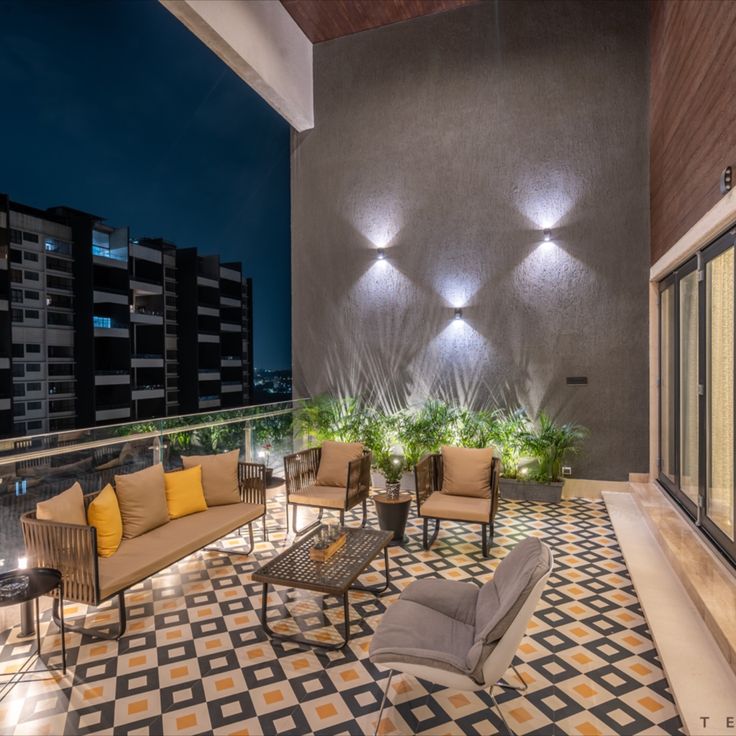
6. Pattern
Patterns add interest and excitement to a design. They are the repetition of a graphic motif form on a surface, such as a fabric or wallpaper, arranged in an orderly way to create an illustrative perception. The most common fabric patterns in interior design are – floral, paisley, geometric, stripes, polka dots, checks, brocade, chevron, chintz, herringbone, jacquard, Ikat, and animal prints.
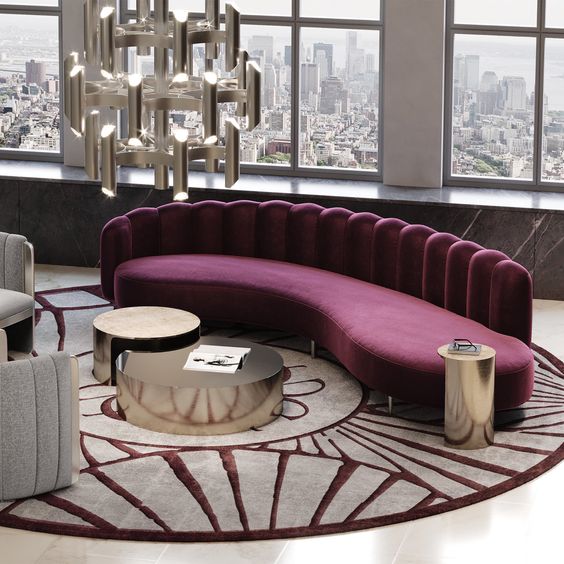
7. Shape and Form
The collection of horizontal, vertical, or dynamic lines that produces a shape is called a form. A shape can be geometric (angular), natural (curved), open or closed. It includes length, breadth, height, mass, and volume. Shape and form are both interdependent and defined as per the function of the space.
The 7 Interior Design Principles
Scale & proportion, balance, rhythm, contrast, emphasis, harmony & unity, and details are the seven principles of interior design. Professional interior designers understand the importance of design principles and follow them to transform any space. These principles are:
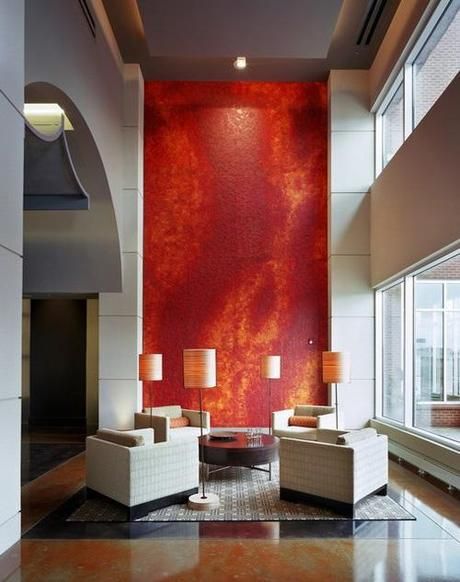
1. Scale & Proportion
Scale and proportion is a mathematical interior design principle. While scale refers to the size of one object in relation to another in the same space, the proportion is the balance between design elements such as shape, colour, and texture. Typically, scale and proportion in interior design are related to design elements like furniture placement and wall art.
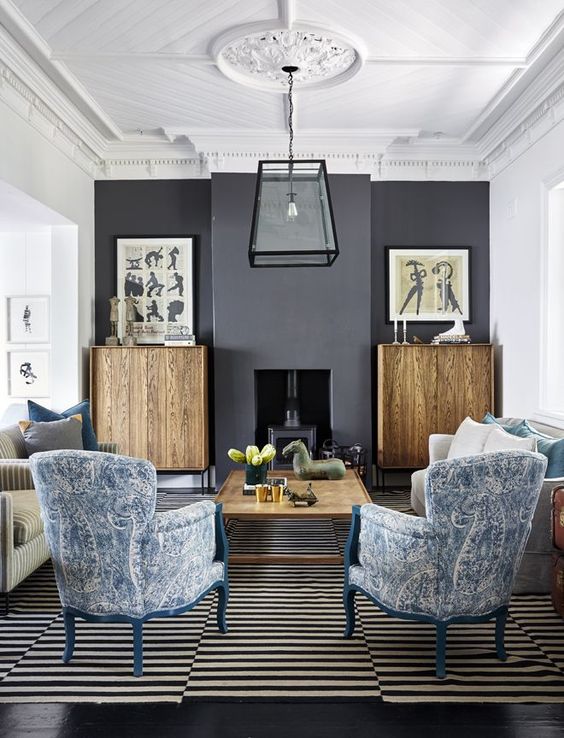
2. Balance
In interior design, balance is about creating a feeling of equilibrium in a designated space or room. It comes by using the right shape, colour, pattern, and texture. There are basically three different kinds of balance – Symmetrical or formal (mirror image on either side of the room), asymmetrical or informal (opposite sides of the room do not match but carry the same visual weight), and radial (begins with a central point from which the objects in the room radiate in a spiral pattern).
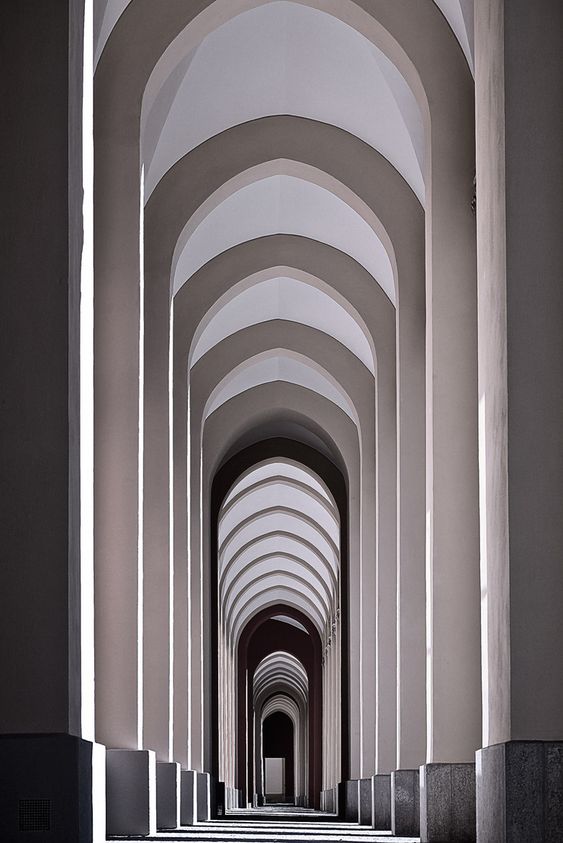
3. Rhythm
Rhythm is a pattern used to create movement and order within a space. It is attained in three ways – by repetition (repeating line, colour, texture, pattern and light in an organized method), by alternation (alternating two or more elements in a regular pattern), and by progression (gradation of colour or size).

4. Contrast
In interior design, contrast is the difference in the luminance or colour of objects. It is also the arrangement of opposite elements in a space. It means mixing light and dark colours, smooth and rough textures, round and square shapes, glossy and matte finishes, and positive and negative spaces. Contrast helps to create a focal point breaking away from being monotonous or neutral.
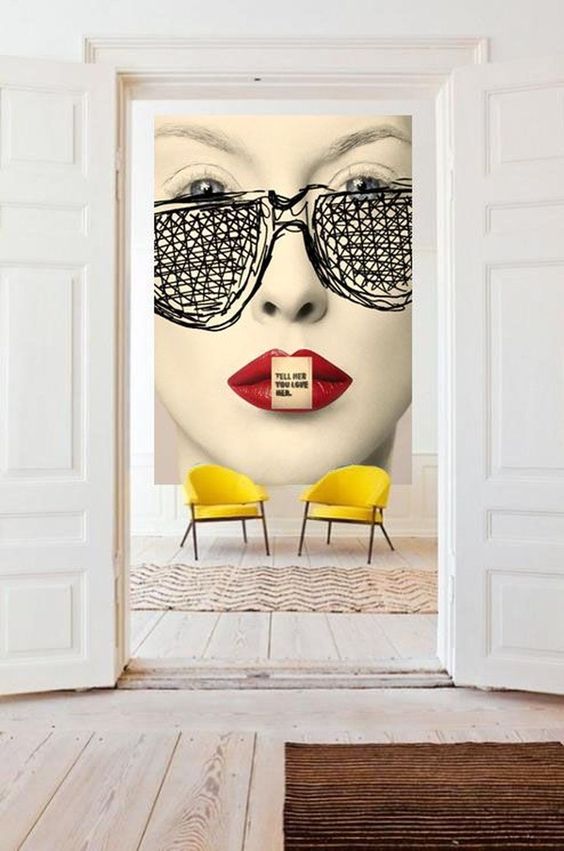
5. Emphasis
Emphasis in interior design relates to creating focus within a designated space. An interior designer may introduce an ornate chandelier, a large painting, an antique piece of furniture, or even a fireplace as a focal point to attract attention. Most top interior decorators first create a focal point and then design the interiors of the room.
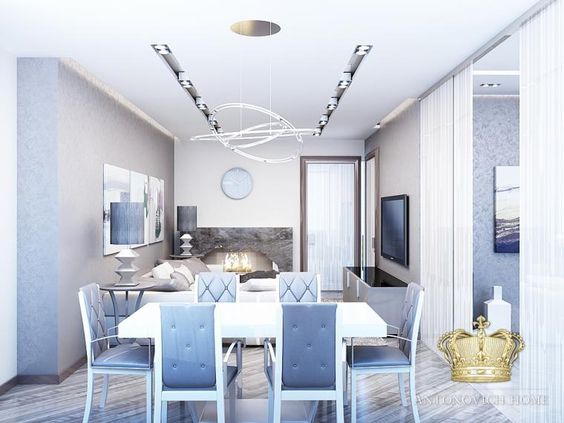
6. Harmony & unity
The principle of harmony induces a restful feel. Here, similar or related themes, styles, and design elements combine to create a visually satisfying effect. Harmony brings unity. In interior design, unity refers to the repetition of colour, shape, or texture throughout the design.

7. Details
Detailing involves finishes or embellishments and how a surface meets another surface to render a perfectly finished look. Interior design details include paying attention to light switches, cabinet hardware, cushion piping, nail head trims, window treatments, plants, and more.
Every top interior designer in India or worldwide will always start an interior design project keeping these basic elements and principles of interior design in mind. It is the key to creating perfectly designed spaces for – homes, offices, retail, and hospitality.





